Nature Network Club Reflects on Changes in the Season (and Life) Through Social Media Posts
April 12, 2023
Jill Martin, Community Outreach Interpretive Services Supervisor
Last fall, high schoolers in Riverside West Academy’s Nature Network Club, a Metroparks-sponsored Science and Nature Club with a focus on technology, took on the challenge of creating a social media post focused on seasonal changes at the Metroparks. They visited Lake Erie Metropark twice, with the intention of taking photographs and creating social media posts to describe the seasonal changes they saw. With the time constraints and immediacy that social media requires, only one post was able to be featured on the Metroparks Instagram, however there were many other thoughtful posts that I’d like to feature here. Each post below contains a photograph taken with a student phone or class tablet, along with personal reflection or educational content written by the student.
From Marwa Taleb:
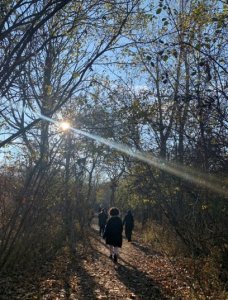 Walking down this trail in the Metropark made me feel peace. As the sun glared in from the trees, I felt as though it represented all sorts of hope for our generation. I felt a sense of relief off of my shoulders. It removed all sorts of stress from my head for a little while looking at such a view. With finals coming up, this is definitely something that relieve you from that pressuring stress.
Walking down this trail in the Metropark made me feel peace. As the sun glared in from the trees, I felt as though it represented all sorts of hope for our generation. I felt a sense of relief off of my shoulders. It removed all sorts of stress from my head for a little while looking at such a view. With finals coming up, this is definitely something that relieve you from that pressuring stress.
From Tasneem Omer:
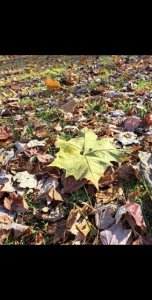
During fall, the leaves fall off and change color. That change is what most of us associate the season with. However, have you ever thought of why that is? Why do the leaves change color? Is something causing the change? If you did, you’ve come to the right place! Here is a little background of why this change occurs.
The majority of the food required for the tree’s growth is produced in the leaves during the spring and summer. Numerous cells in the leaf that contain the pigment chlorophyll, which gives the leaf its green color, are where this food-making process takes place. This remarkable chemical uses sunlight to absorb the energy required to convert carbon dioxide and water into carbohydrates like sugars and starches. However, the leaves stop producing food in the fall due to changes in temperature and the length of daylight. Chlorophyll decomposes, the green color vanishes, and the yellow to orange hues emerge, contributing to the fall brilliance of the leaves.
From Nour Bazzi:
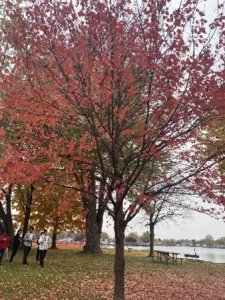
“Find me under the trees sitting in the breeze.”
From Jawaher Alnolzili:
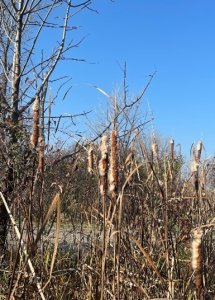
That cylinder looking plant is called a Cattail, but I like to call them “Nature’s Hot Dogs”. They are usually found in up to 2 feet of water in marshes. Cattails could be very useful in many ways like making decorations by preserving them. You can preserve these so-called hot dogs by spraying any sort of hairspray so the fluff on the inside won’t come out and then placing the cattails in a vase. You can also make dishes using the white stalks near the roots and the shoots that are not fully developed yet. Stir frying them like asparagus will do. Some say that cattails taste like a bitter cucumber so you could include the lower parts of the leaves in your salad. What’s scary about these plants is that they have a similar look alike called “Poison Iris”. You can tell the difference by plucking them out of the ground and looking at their bases. If it has an oval-like base, it’s safe to consume. If the base is flat on the other hand, then that’s your warning to throw it away.
From Hedih Ghaleb:
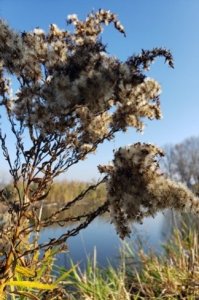
Goldenrod is a herbaceous perennial wild flower native To eastern North America that blooms in late summer/early Fall. A perennial flower is a plant that is long lasting and comes back every single year. All goldenrods are referred to as “composites” Meaning they have flowers clustered together into a composite flower that contains ray and disc flowers. Goldenrod is also an important nectar source they are generally claimed as a nectar producer.
From Fatima Ahmad:
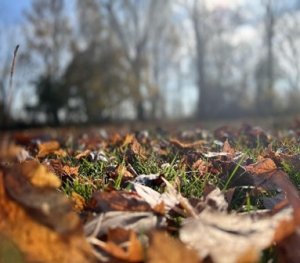
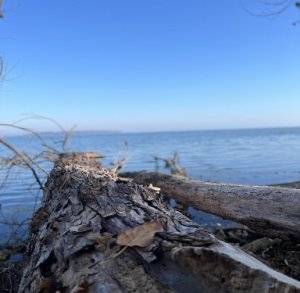
“After all, change isn’t always bad. Go outside and enjoy the colorful leaves.”
From Ali Shuqir:
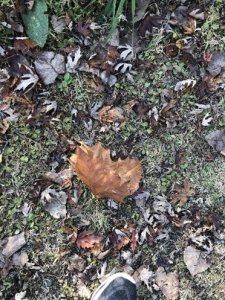
“No matter the type, size, color, looks or anything that differentiates us, in the end we are leaves and we originate from the same place therefore we all should be treated equally.”
From Zeinab Aboutaam:
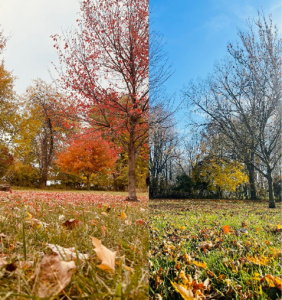
ورقة الشجر المتساقطة ليست أكثر من وداع موجة الصيف
Translation: “A falling leaf is nothing more than a summer´s wave goodbye.”
In just a short two weeks the trees quickly changed to prepare for the cold. With the same location at two different points in time, one thing obvious…change is unpredictable. With every leaf change poetry is left in the air.
In his 1997 book “The Courage to Teach”, Parker Palmer writes about the teaching vocation occurring at the intersection of public and private life. When it was originally published no one knew what powerful influence modern social media would have on our lives, and how it would provide a venue for all of us to share our own private lives publicly. Arguably teens are one of the demographics most impacted by social media. Often this is discussed in a negative light. However, we are lucky to know this group of teens who are using social media to share that intersection of public and personal in a very positive way, when it comes to their experiences in the Metroparks. We look forward to seeing how else this insightful group of young people will positively impact their world!
